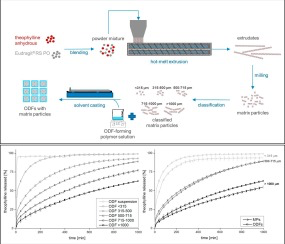- Home
- Blog
- News
- Basics
- Sources
- Agencies, Regulatory & Organisations
- CERSI Excipients Browser
- Excipient Report
- Excipient DMF List
- EXCiPACT Certified Companies
- Excipient Documentation
- Excipient EINECS Numbers
- Excipient E-Numbers
- FDA Inactive Ingredient List
- FDA GRAS Substances (SCOGS) Database
- IPEC Americas
- USP - U.S. Pharmacopeia
- Definitions
- Whitepapers / Publications
- Supplier
- Services
- Media
- Events
- 1st pharmaexcipients Poster Award
- Event Calendar
- Events featured by pharma-excipients
- 4th Annual Formulation & Drug Delivery Congress
- DDF Summit
- ExcipientFest Americas
- ExcipientFest Asia
- Global CompliancePanel
- International Conference and Exhibition on Pharmaceutics & Novel Drug Delivery Systems
- Formulation & Drug Delivery USA Congress
- Laboratory Medicine 2018
- Making Pharmaceuticals Europe
- Making Pharmaceuticals Exhibition
- Pharma Integrates
- PharmaExcipients China @CPhI China
- TTC Technology Training Center
- Jobs
- Online Sourcing
- Contact
13. September 2018
Orodispersible films (ODFs) provide high application comfort due to rapid disintegration in the oral cavity. They increasingly found the approval of pharmaceutical research and development and were added to the European Pharmacopeia in 2012. The European Pharmacopeia explicitly demands disintegration testing for ODFs, but does not refer to a suitable method. The aim of this study was to collect and evaluate existing disintegration methods regarding their suitability to investigate different ODF...
28. May 2018
Orodispersible films (ODFs) are an advantageous dosage form to accomplish patient convenience and compliance in oral drug delivery. They provide a number of special application features, such as the ease of administration without water and suitability for patients with swallowing problems. However, this promising dosage form has been limited to immediate release formulations so far. The aim of this study was to develop a thin film produced by solvent casting, which is rapidly disintegrating...
08. March 2017
Abstract There are several strategies for improving functional properties of starch-based materials. Blending with more hydrophobic compounds and bilayer formation are the most common methods. Barrier properties of several formulations obtained by different processing methods were measured. The properties of some obtained materials were compared with those usually employed in food packaging. The most promising materials were those starch PCL blends, compatibilized with grafted...
25. July 2016
Present research was aimed with the objective of formulation of Zolpidem fast dissolving oral films, for rapid dissolution of drug and absorption, which may produce the rapid on set off action. The fast dissolving oral films were prepared by solvent casting method using various polymers like HPMC E5, HPMC E15, HPMC K15, microcrystalline cellulose and poly vinyl alcohol. Glycerol used as plasticizer. Prepared films were evaluated for various physicochemical parameters like film thickness,...
25. April 2016
Miniaturised solvent casting (MSC) has been developed as a method for screening the stability of amorphous solid dispersions (ASD) of BCS class II drugs. The aim of the work was to further develop a rapid screening technique for drug-polymer amorphous dispersions made by solvent removal techniques. A second aim was to assess the impact of varying dissolution solvent on the resultant ASD stability. The technique was rapid, repeatable and practically straightforward. Storage stability of...
22. April 2016
The main route of administration for drug products is the oral route, yet biologics are initially developed as injectables due to their limited stability through the gastrointestinal tract and solubility issues. In order to avoid injections, a myriad of investigations on alternative administration routes that can bypass enzymatic degradation and the first-pass effect are found in the literature. As an alternative site for biologics absorption, the buccal route presents with a number of...
19. February 2016
Purpose: The objective of the present study was to formulate and evaluate buccal patches containing combination of lisinopril (LP) and hydrochlorothiazide (HCZ). Approach: Films were fabricated by solvent casting method, using combination of mucoadhesive polymers such as hydroxypropylmethyl cellulose (HPMC), hydroxypropyl cellulose (HPC), polyvinyl alcohol (PVA) and polyvinyl pyrolidone (PVP) and ethyl cellulose (EC) as backing layer. The patches were evaluated for physicochemical...
14. January 2016
04. October 2015
Polyvinyl acetate (PVAc) nanoparticles improved the tensile properties of maltodextrin films. Maltodextrin and PVAc are immiscible. Plasticizers favored the homogenous dispersion of PVAc to the concentration of 10% w/w.
18. July 2015
Phase-sensitive in situ forming implants (ISFI) are a promising platform for the controlled release of therapeutic agents. The simple manufacturing, ease of placement, and diverse payload capacity make these implants an appealing delivery system for a wide range of applications. More


